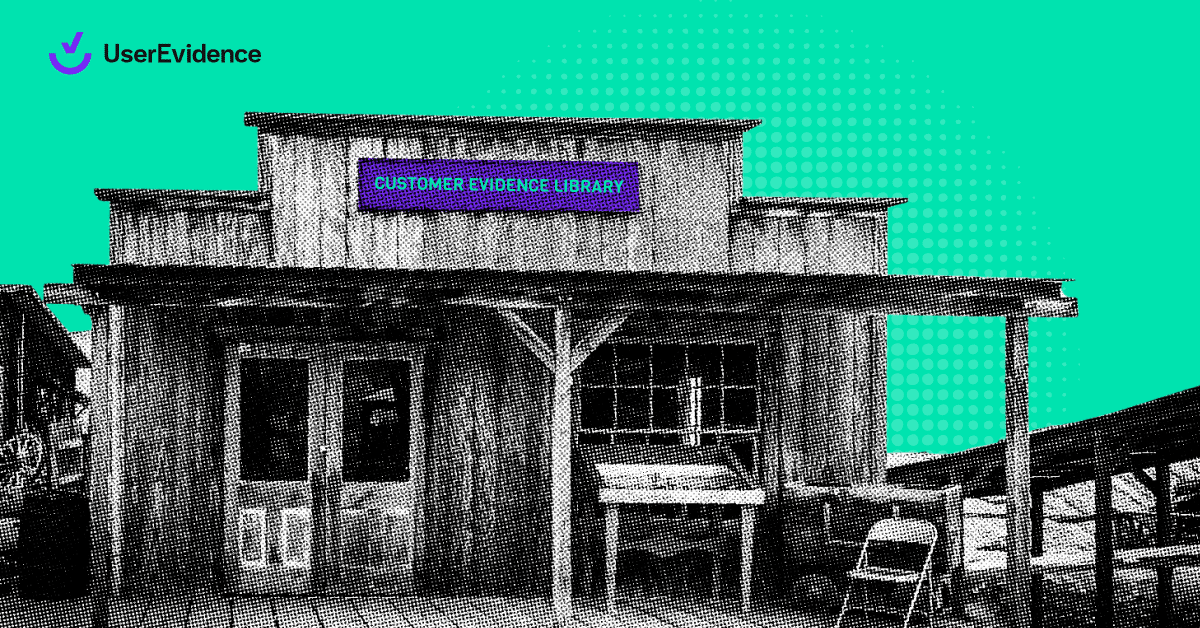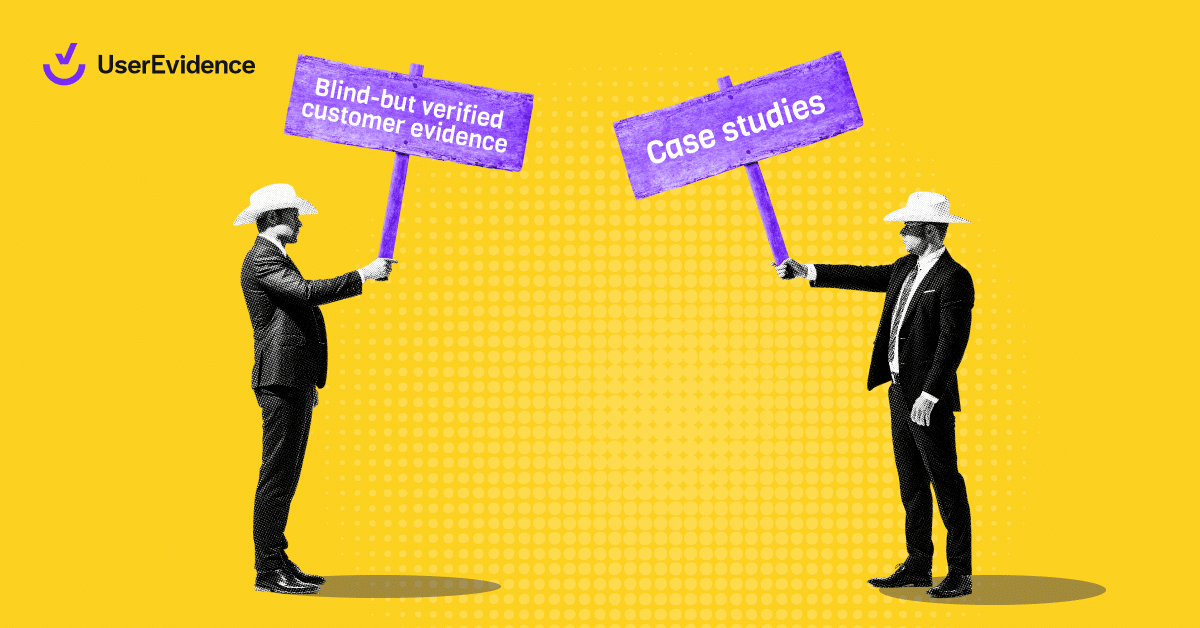If you’ve ever evaluated a customer advocacy platform, you already know the demo is the best version of the product you will ever see. Clean data. Happy paths. Ideal workflows. Everything clicking exactly the way it should.
And that’s the problem.
Advocacy programs don’t live inside polished demo environments. They live in the real world. Customer behavior is unpredictable. Approval processes take weeks or months. Sellers all work differently. Your systems aren’t perfectly connected. Customers don’t raise their hand the moment you need them to.
This gap between demo conditions and real conditions is why so many advocacy platforms collapse after they’re purchased. Not because the software is bad, but because the buying process never tested the situations that actually determine success.
That was the heart of a conversation we hosted recently with two people who see this space from opposite ends.
Evan Huck, CEO of UserEvidence, sees the patterns across hundreds of companies.
Kevin Lau, who leads Customer Marketing at Freshworks, deals with the internal realities vendors never put on a slide.
They shared these stories on last week’s webinar, and they revealed something important: advocacy platforms don’t fail because teams pick the wrong category. They fail because teams don’t evaluate them through the lens of actual usage, internal pressure, and real operational strain.
That’s exactly why we created the new Six Fault Lines Guide and RFP Template. More on that later. First, here’s what you need to understand about how collapse actually happens.

The part of advocacy no demo ever prepares you for
Evan made a point during the webinar that stopped the room. Demos are Disneyland rides. You get on, follow the rails, enjoy a smooth journey, and nothing unpredictable happens. It’s designed that way.
But advocacy programs don’t run on rails. They run inside complex organizations with unpredictable customer behavior, inconsistent data, and stakeholders who don’t move in sync. The minute the platform touches your sales team, customer success team, security team, and approval processes, that controlled demo environment disappears.
Kevin added something every operator knows but doesn’t always say out loud. At enterprise scale, if a new platform doesn’t show real value in the first 60 to 90 days, the internal pressure starts. IT questions whether it belongs in the stack. Finance wants to know if it’s contributing to revenue or just creating work.
Advocacy doesn’t get a long runway. It either proves its worth early or it becomes another tool people slowly back away from.
If you evaluate platforms based on a demo alone, you will miss the exact situations that decide whether your program succeeds or stalls.
Where programs start to strain before anyone calls it a problem
A lot of teams assume activation is simple. Identify advocates, send invitations, track engagement. Kevin was clear it doesn’t work that way in practice.
Your strongest advocate moments aren’t always coming from the places you expect. They surface in product usage patterns, in renewal conversations, in offhand comments on Gong calls, in survey responses that reveal real enthusiasm, or inside community channels. If your platform is only looking for signals in one place, you’re missing most of your actual advocates.
Evan pointed out another issue that hides in plain sight. Many programs unintentionally send customers into experiences that feel disconnected from the product. Extra logins. Separate portals. Unfamiliar workflows.
When the experience feels foreign, participation drops. Not because customers don’t like you, but because the process feels bolted on rather than woven into their relationship with the product.
Those early cracks never show up in a demo. They show up 30 to 45 days after the platform launches, when engagement starts to slip and teams aren’t sure why.
The evidence gap sellers feel immediately
Marketing loves big stories, polished videos, and multi-page case studies. They matter, but they don’t solve the problem sellers feel when they’re in an active deal.
Kevin said it plainly. When a prospect throws an objection or asks whether another company in their industry solved the same problem, sellers need evidence they can find quickly, that matches the moment, and that uses real customer language. They aren’t reading eight-page artifacts. They’re scanning for something they can drop into the conversation right now.
Evan explained why this is so hard for most companies. Their customer proof is scattered everywhere. Case studies in one place. Reviews somewhere else. References in inboxes. Survey snippets that never leave Qualtrics. Usage data in another system. Everyone assumes someone else knows where the proof lives.
Platforms collapse when they don’t unify these sources or make the evidence easily discoverable. If sellers can’t find what they need in under a minute, they stop using the tool. Once that happens, the program never recovers.
The reference fatigue cycle every company eventually hits
There was a moment in the webinar where Kevin described something every customer marketer knows all too well: the same five to ten advocates carry the entire reference load until they burn out.
It isn’t intentional. It happens because those customers are responsive, articulate, and willing. Over time, they get overused. Legal gets tired of repeating the same approval steps. Sellers get impatient and start bypassing the process. Champions step back.
Evan explained a more modern approach. Many of the best reference candidates aren’t on your existing lists at all. They’re hidden in survey comments, Gong recordings, review platforms, and usage signals. If a platform can surface these moments and help expand the advocate bench, you prevent burnout and keep the program healthy.
When a platform can’t do that, you end up cycling the same names until the system breaks.
The measurement gap that hurts the program more than people admit
Kevin said something everyone in the chat immediately understood: dashboards are not ROI. Activity counts are not ROI. Finance doesn’t respond to high-level charts and colorful reports.
What they want to know is simple. Do customers who engage as advocates behave differently? Do they renew at a higher rate? Do they expand more? Do they stay longer? Does evidence help sellers move deals faster? Does proof reduce risk in competitive cycles?
Teams earn credibility when they test real hypotheses and show real patterns. Advocacy becomes defensible when it connects to outcomes that matter to the business. If a platform can’t help you see those patterns, it becomes harder to justify in future budget cycles.
The integration and governance issues that quietly sink entire rollouts
Toward the end of the conversation, Kevin made a comment that stuck with a lot of attendees. Integrations are the part that keep him up at night. Advocacy touches CRM, sales enablement tools, community, product data, and analytics. If the platform needs custom engineering to connect to every system, adoption slows to a crawl.
Evan added a practical detail buyers should pay attention to. Vendors who can immediately provide complete documentation around compliance, accessibility, data flows, and integration behavior tend to be ready for real enterprise pressure. Vendors who scramble to supply these materials later in the cycle create unnecessary risk.
Rollouts succeed when the infrastructure is solid and workflows feel natural. They fail when approvals slow things down, integrations behave differently than expected, or the tool sits adjacent to the work instead of inside it.
Why we built the guide and RFP template
Everything above is why we created the Six Fault Lines Guide & RFP Template. Not to overwhelm teams with a giant checklist, but to give them a cleaner way to evaluate advocacy platforms based on the realities that decide whether the program thrives.
The guide focuses on the specific pressure points demos never reveal. The RFP template helps teams run a more structured, objective evaluation that tests how each vendor handles real-world conditions like activation, evidence flow, approval processes, governance, and integration readiness.
You don’t need to memorize every detail to run a better evaluation. You just need a smarter lens.
A polished demo can make any platform look strong. Real conditions tell you something very different.
The teams who understand those conditions early are the ones whose programs never collapse in the first place.

_________________________________________________________________________________________




